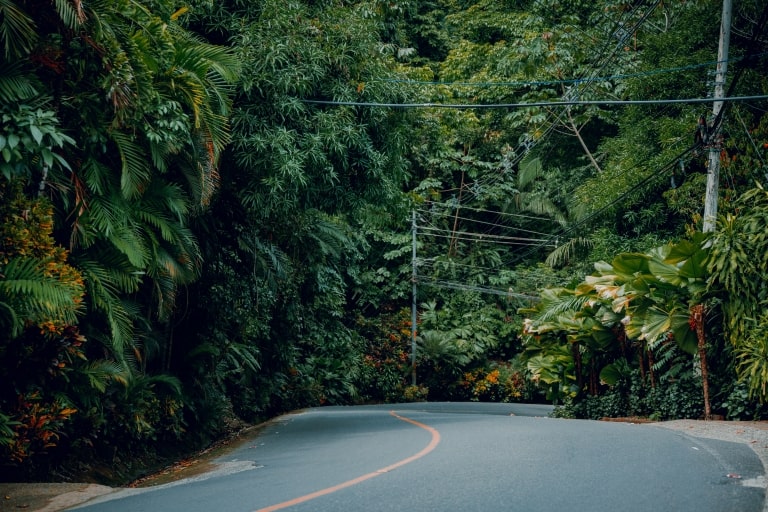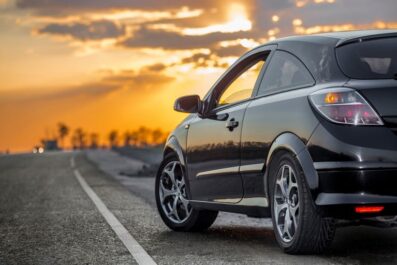Driving In Costa Rica: A Quick Checklist For Tourists

Imagine winding roads framed by lush rainforests, the distant roar of howler monkeys, and the promise of adventure around every corner. It is your drive in Costa Rica. But prepare for a challenge — Costa Rican roads will baffle you with local traffic laws and unique road signs. Here’s what you should know about driving in this blazing country to stay confident and safe.
Must-Know Rules for Driving in Costa Rica
Speed Limits
Costa Rican speed limits vary depending on the area you navigate. In cities and rural areas, they usually won’t exceed 50 km/h. However, they can drop to as low as 25 km/h in residential areas or near schools, especially during school hours.
Moving to highways, most of these areas allow 80-100 km/h speeds. But safety is paramount on these swirling roads, so expect that this speed limit can drop in some mountainous areas.
Seat Belts
Seat belts are a must here. However, remember that Costa Rican law mandates seat belt usage for all vehicle passengers, not just drivers. Plus, children under 12 must also be seated in the back and use an appropriate child restraint system.
Alcohol and Driving
For you as a tourist, the BAC limit is 0.05%. Also, Costa Ricans are strict about alcohol and driving — DUI checkpoints are common, especially on weekends and holidays. Fines for exceeding the limit can range from several hundred (usually $500) to thousands of dollars, alongside the possibility of license suspension and imprisonment for 1-3 years.
Insurance
Mandatory insurance (known as “Marchamo”) covers basic liability. But I also recommend purchasing additional collision and theft coverage, especially if you’re renting a vehicle.
Unique Challenges
Costa Rica is a country of thriving wildlife and changeable weather, so be prepared for the following hazards:
- Wildlife Crossings: Be alert for animals crossing the road — a common occurrence in rural and forested areas.
- Bridges: Mind that many bridges are one-lane, even on two-lane roads. Approach with caution and yield to oncoming traffic if necessary.
- Fog and Rain: Sudden weather changes are typical threats in Costa Rica. So, if you drive into a storm, slow down, use fog lights if you have them, and maintain a safe following distance.
Renting a Vehicle: What Tourists Need to Know
A car is probably the most convenient way to move around Costa Rica. Indeed, if you want to see more of this country than just conventional tourist spots, you MUST rent a vehicle. The process is overall straightforward, but you still need to know several less apparent nuances.
- Pricing: When considering car rental in Costa Rica, you must account for several extra expenses. Find those final prices a bit costly? Well, to compare, a luxury car rental in Europe can even cost $800+ per day. So, the prices in Costa Rica are still much more democratic.
| Fee Type | Cost Range | Notes |
| Under 25 Fee | $10-$20 per day | Applicable to drivers under 25. May also require purchasing maximum insurance. |
| Additional Drivers | $10-$20 per day each | Charge for each additional driver beyond the primary renter. |
| Mandatory Liability Insurance | $13-$25 per day | Required by law. Covers third-party damages up to $20,000 USD with a 20% deductible. |
| Rental Rates | Varies (e.g., $5-$38/day) | Dependent on location (e.g., Liberia, Quesada, Jacó) and car type. Rates include all taxes and fees. |
- Age Requirements: Renters must be at least 21 years old, though some agencies prefer 25.
- Required Documents: A valid driver’s license from your home country and a credit card. An International Driving Permit is not mandatory but recommended.
- Insurance: Costa Rican law requires basic liability insurance, but it’s wise to consider additional coverage for peace of mind.
Costa Rica Road Signs
So, knowledge of road signs in the main condition to navigate any country safely. Although many of them are intuitive, some might still be unfamiliar to international drivers:
- “Ceda el Paso”: Yield.
- “Despacio”: Slow Down.
- “No Estacionar”: No Parking.
- “Precaución”: Caution.
- “Curva Peligrosa”: Dangerous Curve.
- “Paso de Animales”: Animal Crossing.
- “Puente Angosto”: Narrow Bridge.
- “Zona Escolar”: School Zone.
- “Alto”: Stop.
- “Camino Sinuoso”: Winding Road.
- “Velocidad Máxima”: Maximum Speed.
Additionally, watch for signs indicating wildlife crossings and sharp bends, which are common in rural and forested areas. Costa Rican roads can also feature sudden elevation changes, so be prepared for steep ascents and descents.
Handling Emergency Situations
Sure, emergencies can happen even if you take all the precautionary measures. But no worries, here’s what you should do.
In Case of an Accident
First and foremost, ensure that everyone is safe. After that, try to move vehicles out of traffic. Once done, call 911 — Costa Rica’s emergency services are reliable, with operators often speaking English. And remember to document everything: Take photos and gather information from all parties involved for insurance claims.
In Case of a Theft
Whatever happens, your safety is paramount. If you’re the victim of a theft, assess your surroundings to ensure you’re not in immediate danger. Once you’re entirely safe, report the theft to the local police. Plus, if you rent a vehicle, contact the rental agency immediately. Finally, contact your travel or vehicle insurance provider to report the theft. Provide them with all necessary documentation, including the police report and evidence of the theft (photos, witness statements, etc.).
In Case of a Medical Emergency
Costa Rica has a reliable emergency response system, and 911 operators can dispatch medical assistance, so contact them first. In severe cases, or if hospitalization is required, you should also contact your embassy or consulate. If you have travel insurance covering medical emergencies, call your provider as soon as feasible. After you receive initial treatment, follow up as recommended by healthcare professionals.
Checklist for Road Trips in Costa Rica
So, are you ready for that electrifying Costa Rican road adventure? Let’s check with this detailed checklist!
- Do you have a valid driver’s license, passport, and a copy of your entry stamp?
- Did you thoroughly inspect your rental car for any existing damages and ensure all its functions (lights, wipers, brakes) are in working order?
- Did you verify your insurance coverage details?
- Do you have a reliable means of navigation, like a GPS or a local SIM card on your smartphone for maps?
- Have you saved important contact numbers, including the rental agency’s roadside assistance, local emergency services (911), and your country’s embassy or consulate?
- Did you learn basic Spanish phrases for directions, assistance, and emergencies?
- Did you pack an essential kit, including water, snacks, first aid supplies, a flashlight, and a printed area map?
- Did you check the weather forecast and road conditions for your route?
- Did you plan your fuel stops in advance?



